|
|
|
 |
 |
 |
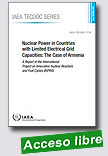 |
Nuclear Power in Countries with Limited Electrical Grid Capacities: The Case of Armenia - A Report of the International Project on Innovative Nuclear Reactors and Fuel Cycles (INPRO)
IAEA TECDOC, 2016, 154 p.
This publication addresses issues relating to nuclear power deployment faced by countries with electrical grids of limited capacity and stability. In particular, technology issues and related institutional measures as well as some technical and economic options for managing spent fuel and radioactive
|
waste applicable in these circumstances are addressed. It aims to assist States implementing a nuclear power programme in the development of a comprehensive approach to the long term management of spent nuclear fuel and radioactive waste that is technically sound, environmentally responsible, economically feasible and acceptable to all stakeholders. Armenia was selected as a case study and the data obtained from the studies performed led to general recommendations which could be applicable to some other countries with similar economies and grid characteristics.
Extraído de: http://www-pub.iaea.org/books/IAEABooks/10572/Nuclear-Power-in-Countries-with-Limited-Electrical-Grid-Capacities-The-Case-of-Armenia
|
 |
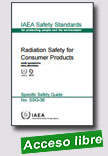 |
Radiation Safety for Consumer Products
IAEA Safety Standards Series, 2016, 109 p.
In the IAEA safety standards, a ‘consumer product’ is defined as a device or manufactured item into which radionuclides have deliberately been incorporated or produced by activation, or which generates ionizing radiation, and which can be sold or made available to members of the public without special surveillance or regulatory control after sale. Many such products, including irradiated gemstones, are sold in commercial outlets and over the Internet. This Safety Guide |
outlines the regulatory approach to authorizing the manufacture and supply of such products to the public, including justification, safety assessment and application of the criteria for exemption. The guidance will also assist manufacturers, transport companies and suppliers to comply with regulatory requirements during the life cycle of consumer products, including recycling and disposal at the end of their useful life.
Extraído de: http://www-pub.iaea.org/books/IAEABooks/10716/Radiation-Safety-for-Consumer-Products
|
 |
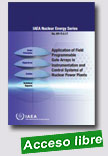 |
Application of Field Programmable Gate Arrays in Instrumentation and Control Systems of Nuclear Power Plants
IAEA Nuclear Energy Series, 2016, 80 p.
Field programmable gate arrays (FPGAs) are gaining increased attention worldwide for application in nuclear power plant (NPP) instrumentation and control (I&C) systems, particularly for safety and safety related applications, but also for non-safety ones. NPP operators and equipment suppliers see potential advantages of FPGA based digital I&C systems
|
as compared to microprocessor based applications. This is because FPGA based systems can be made simpler, more testable and less reliant on complex software (e.g. operating systems), and are easier to qualify for safety and safety related applications. This publication results from IAEA consultancy meetings covering the various aspects, including design, qualification, implementation, licensing, and operation, of FPGA based I&C systems in NPPs.
Extraído de: http://www-pub.iaea.org/books/IAEABooks/10770/Application-of-Field-Programmable-Gate-Arrays-in-Instrumentation-and-Control-Systems-of-Nu
|
 |
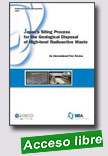 |
|
geological disposal facility for high-level radioactive waste, the international review team emphasises in this report the importance of maintaining an open dialogue and interaction between the regulator, the implementer and the public. Dialogue should begin in the early phases and continue throughout the siting process. The international review team also underlines the importance of taking into account feasibility aspects when selecting a site for preliminary investigations, but suggests that it would be inappropriate to set detailed scientific criteria for nationwide screening at this stage. The team has provided extensive advisory remarks in the report as opportunities for improvement, including the recommendation to use clear and consistent terminology in defining the site screening criteria as it is a critical factor in a successful siting process.
Extraído de: http://www.oecd-nea.org/tools/publication?query=&div=&lang=&period=6m&sort
=title&filter=1#p7331 |
 |
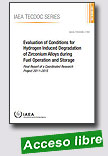 |
Evaluation of Conditions for Hydrogen Induced Degradation of Zirconium Alloys during Fuel Operation and Storage
IAEA TECDOC, 2015, 86 p.
This publication reports on the work carried out in 2011–2015 in the coordinated research project (CRP) on the evaluation of conditions for hydrogen induced degradation of zirconium alloys during fuel operation and storage. The CRP was carried out to evaluate the threshold condition for delayed hydride cracking (KIH) in pressurized water reactors and zircaloy-4 and E635M fuel claddings, with application to in-pile operation and |
spent fuel storage. The project consisted of adding hydrogen to samples of cladding and measuring KIH by one of four methods.
Extraído de: http://www-pub.iaea.org/MTCD/Publications/PDF/TE-1781_web.pdf |
 |
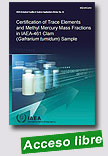
|
Certification of Trace Elements and Methyl Mercury Mass Fractions in IAEA-461 Clam (Gafrarium tumidum) Sample
IAEA Analytical Quality in Nuclear Applications Series, 2016, 62 p.
Many laboratories are involved in the production of local or regional environmental data leading, in many cases, to wider assessments. These laboratories may develop and validate new analytical methods, study the environmental impact of human activities, provide services to other organizations, etc. Because of the needs to base scientific conclusions on valid |
and internationally comparable data and to provide policy makers with correct information on the state of the environment, it is indispensable to ensure the quality of the data produced by each laboratory.
The Marine Environmental Studies Laboratory (MESL) of the IAEA’s Environment
Laboratories (IAEA-EL) has the programmatic responsibility to provide assistance to Member States’ laboratories in maintaining and improving the reliability of analytical measurement results, both in trace elements and organic pollutants. This is accomplished through the provision of certified reference materials of marine origin, validated analytical procedures, training in the implementation of internal quality control, and through the evaluation of measurement performance by the organization of worldwide and regional interlaboratory.
IAEA subprogram ‘Reference Products for Science and Trade’ represents an important benchmark in upgrading the quality of laboratory performances and assessing the validity of the analytical methods used for marine monitoring studies in the Member States.
Laboratories need to be able to check the performance of their methods for the determination of trace elements in difficult matrices such as marine biota. This is also true for standardized methods, the use of which does not guarantee accurate results. It is widely accepted that laboratories need to demonstrate their proficiency in the applicability of standard methods, for example, by using certified reference materials (CRMs). While there are several CRMs certified for trace elements, there still is a noticeable lack of matrix CRMs.
The work presented in this report refers exclusively to the certification of the mass fractions of 15 trace elements (As, Ca, Cd, Co, Cr, Cu, Fe, Hg, Methyl Hg, Mn, Ni, Pb, Se, V and Zn) in clam (Gafrarium tumidum) biota sample.
Extraído de: http://www-pub.iaea.org/MTCD/Publications/PDF/IAEA-AQ-44_web.pdf
|
 |
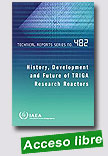 |
History, Development and Future of TRIGA Research Reactors
IAEA Technical Reports Series, 2016, 113 p.
Due to its particular fuel design and resulting enhanced inherent safety features, TRIGA reactors (Training, Research, Isotopes, General Atomics) constitute a ‘class of their own’ among the large variety of research reactors built world-wide. This publication summarizes in a single document the information on the past and present of TRIGA research reactors and presents an outlook in view of potential issues to
|
be solved by TRIGA operating organizations in the near future. It covers the historical development and basic TRIGA characteristics, followed by utilization, fuel conversion and ageing management of TRIGA research reactors. It continues with issues and challenges, introduction to the global TRIGA research reactor network and concludes with future perspectives. The publication is complemented with a CD-ROM to illustrate the historical developments of TRIGA research reactors through individual facility examples and experiences.
Extraído de: http://www-pub.iaea.org/books/IAEABooks/10943/History-Development-and-Future-of-TRIGA-Research-Reactor
|
 |
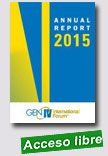 |
Generation IV International Forum (GIF) Annual Report 2015
Nuclear Energy Agency (NEA), 15/06/16, 138 p.
This ninth edition of the Generation IV International Forum (GIF) Annual Report highlights the main achievements of the Forum in 2015. On 26 February 2015, the Framework Agreement for International Collaboration on Research and Development of Generation IV Nuclear Energy Systems was extended for another ten years, thereby paving the way for continued collaboration among participating countries. GIF organised the 3rd Symposium in Makuhari Messe, Japan in |
May 2015 to present progress made in the development of the six generation IV systems: the gas-cooled fast reactor, the sodium-cooled fast reactor, the supercritical-water-cooled reactor, the very-high-temperature reactor, the lead-cooled fast reactor and the molten salt reactor. The report gives a detailed description of progress made in the 11 existing project arrangements. It also describes the development of safety design criteria and guidelines for the sodium-cooled fast reactor, in addition to the outcome of GIF engagement with regulators on safety approaches for generation IV systems.
Extraído de: http://www.oecd-nea.org/tools/publication?query=&div=&lang=&period=
6m&sort=title&filter=1#p7303
|
 |
|
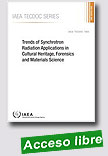
|
Trends of Synchrotron Radiation Applications in Cultural Heritage, Forensics and Materials Science
IAEA TECDOC, 2016, 175 p.
This publication provides an overview of the analytical applications of synchrotron radiation (SR) sources in the fields of cultural heritage, forensics and materials science, and presents relevant research projects carried out by 14 IAEA Member States. The papers included in this publication were presented by experts during a technical meeting held at the IAEA. The meeting provided a forum for specialists in SR
|
applications to review the current status of, and developments and trends in, SR applications, with an emphasis on the fields of cultural heritage, forensics and characterization of energy related materials.
Extraído de: http://www-pub.iaea.org/books/IAEABooks/11096/Trends-of-Synchrotron-Radiation-Applications-in-Cultural-Heritage-Forensics-and-Materials-Science
|
 |
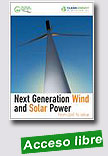 |
Next Generation Wind and Solar Power - From cost to value
International Energy Agency (IEA), 20 June 2016, 40 p.
Wind and solar photovoltaics (PV) are currently the fastest-growing sources of electricity globally. A "next generation" phase of deployment is emerging, in which wind and solar PV are technologically mature and economically affordable.
The success of variable renewable energy (VRE) is also bringing new challenges to the fore. Electricity generation from both technologies is constrained by the varying availability of wind and sunshine. This can make it difficult to maintain the |
necessary balance between electricity supply and consumption at all times.
As these variable renewables enter this next generation of deployment, the issue of system and market integration becomes a critical priority for renewables policy and energy policy more broadly. The paper highlights that this will require strategic action in three areas:
System-friendly deployment, aiming to maximise the net benefit of wind and solar power for the entire system; Improved operating strategies, such as advanced renewable energy forecasting and enhanced scheduling of power plants; Investment in additional flexible resources, comprising demand-side resources, electricity storage, grid infrastructure and flexible generation.
In addition, the paper argues that unlocking the contribution of system-friendly deployment calls for a paradigm shift in the economic assessment of wind and solar power. The traditional focus on the levelised cost of electricity (LCOE) – a measure of cost for a particular generating technology at the level of a power plant – is no longer sufficient. Next-generation approaches need to factor in the system value of electricity from wind and solar power – the overall benefit arising from the addition of a wind or solar power generation source to the power system. System value is determined by the interplay of positives and negatives including reduced fuel costs, reduced carbon dioxide and other pollutant emissions costs, or higher costs of additional grid infrastructure.
In addition to general analysis and recommendations, the paper also includes summaries of three case studies in China, Denmark and South Africa.
Site
Extraído de: http://www.oecd-ilibrary.org/energy/next-generation-wind-and-solar-power_9789264258969-en
|
 |
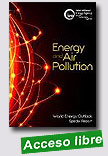 |
World Energy Outlook (WEO) 2016 Special Report on Energy and Air Pollution
International Energy Agency (IEA), 27 June 2016, 266 p.
Around 6.5 million premature deaths each year can be attributed to air pollution; Energy production and use are by far the largest man-made sources of air pollutants; Technologies to tackle air pollution are well known.
Clean air is vital for good health. Yet despite growing recognition of this imperative, the problem of air pollution is far from solved in many countries, and the global health impacts risk intensifying in the decades to come.
|
The scale of the public health crisis caused by air pollution and the importance of the energy sector to its resolution are the reasons why the IEA is focusing on this critical topic for the first time.
Based on new data for pollutant emissions in 2015 and projections to 2040, this special report, the latest in the World Energy Outlook series, provides a global outlook for energy and air pollution as well as detailed profiles of key countries and regions: the United States, Mexico, the European Union, China, India, Southeast Asia and Africa.
In a Clean Air Scenario, the report proposes a pragmatic and attainable strategy to reconcile the world’s energy requirements with its need for cleaner air. Alongside the multiple benefits to human health, this strategy shows that resolving the world’s air pollution problem can go hand-in-hand with progress towards other environmental and development goals.
Executive Summary | Report
Extraído de: http://www.iea.org/publications/freepublications/publication/weo-2016-special-report-energy-and-air-pollution.html
|
 |
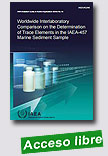 |
Worldwide Interlaboratory Comparison on the Determination of Trace Elements in the IAEA-457 Marine Sediment Sample
IAEA Analytical Quality in Nuclear Applications Series, 2016, 98 p.
The Marine Environmental Studies Laboratory (MESL) of the International Atomic Energy Agency’s Environment Laboratories (IAEA-NAEL) has the programmatic responsibility to provide assistance to Member State laboratories in maintaining and improving the reliability of analytical measurement results for trace elements and organic
|
pollutants. This is accomplished through the provision of reference materials of marine origin, validated analytical procedures, training in the implementation of internal quality control, and through the evaluation of measurement performance by the organization of worldwide and regional
interlaboratory comparison exercises.
For nearly thirty years, the MESL has conducted worldwide laboratory performance studies, also known as intercomparison exercises [1, 2]. The results have been used to evaluate laboratory performance with respect to a wide range of organic [3, 4] and inorganic pollutants, including methylmercury [5, 6]. This work has been conducted in collaboration with the United Nations Environment Programme (UNEP) Regional Seas Programme.
The goal of interlaboratory exercises is to demonstrate the measurment capabilities of laboratories participating in interlaboratory comaprisons (ILC) and proficiency tests (PT). The results from ILC or PT are of crucial interest for laboratories as these provide clear information of its measurement capabilities. It should be pointed out that the participation is either voluntary or forced by external requirements (e.g. legal, accreditation, control bodies). NAEL ILC and PT schemes involve comparison of participant’s results with an assigned value, which usually is delivered as a consensus value from the overall population of test results.
These exercises are designed to monitor and demonstrate the performance and analytical capabilities of the participating laboratories, and to identify gaps and problematic areas where further development is needed. Continued participation has benefits in training and educational opportunities, enhanced mutual trust in results and methodologies and provide an objective evidence for accreditation purposes.
Extraído de: http://www-pub.iaea.org/MTCD/Publications/PDF/IAEA_AQ-46_web.pdf
|
 |
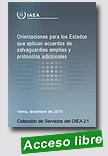 |
Orientaciones para los Estados que Aplican Acuerdos de Salvaguardias Amplias y Protocolos Adicionales
Colección de Servicios del OIEA, 2016, 116 p.
Las presentes Orientaciones están dirigidas principalmente a las autoridades estatales y regionales responsables de la aplicación de las salvaguardias y a los explotadores de instalaciones. Son un documento de referencia al que respaldarán las orientaciones detalladas y los ejemplos que se publicarán separadamente en las guías sobre Prácticas en la Aplicación de las Salvaguardias. El Nº 22 de la Colección de |
Servicios del OIEA es una Guía para la aplicación de las salvaguardias destinada a los Estados signatarios de protocolos sobre pequeñas cantidades. Los Estados podrán consultar todos los títulos de la Colección de Servicios sobre la aplicación de las salvaguardias en formato impreso y también en un formato electrónico en la página web sobre Recursos y asistencia a los Estados en www.iaea.org/safeguards, en la que también hallarán enlaces a formularios, modelos, ejemplos y otras guías conexas.
En las presentes Orientaciones se abordan las obligaciones jurídicas de los Estados y el OIEA en la aplicación de los acuerdos de salvaguardias y sus protocolos. Las descripciones contenidas en estas Orientaciones no tienen carácter jurídico y su propósito no es en ningún caso aumentar, reducir, modificar o suspender los derechos y obligaciones del OIEA y los Estados según se establecen en los documentos Estructura y contenido de los acuerdos entre Estados y el Organismo requeridos en relación con el Tratado sobre la No Proliferación de las Armas Nucleares (INFCIRC/153 [Corregido]) y Modelo de Protocolo Adicional al (a los)
Acuerdo(s) entre el (los) Estado(s) y el Organismo Internacional de Energía Atómica para la Aplicación de Salvaguardias (INFCIRC/540 [Corregido]). En las presentes Orientaciones se facilita información que podría ser de utilidad para los Estados en el ejercicio de los derechos y el cumplimiento de las obligaciones que les incumben en virtud de sus acuerdos de salvaguardias con el OIEA.
Extraído de: http://www-pub.iaea.org/MTCD/Publications/PDF/SVS-21_S_web.pdf
|
| |
| |
|
|
|
|
|
|
|
